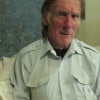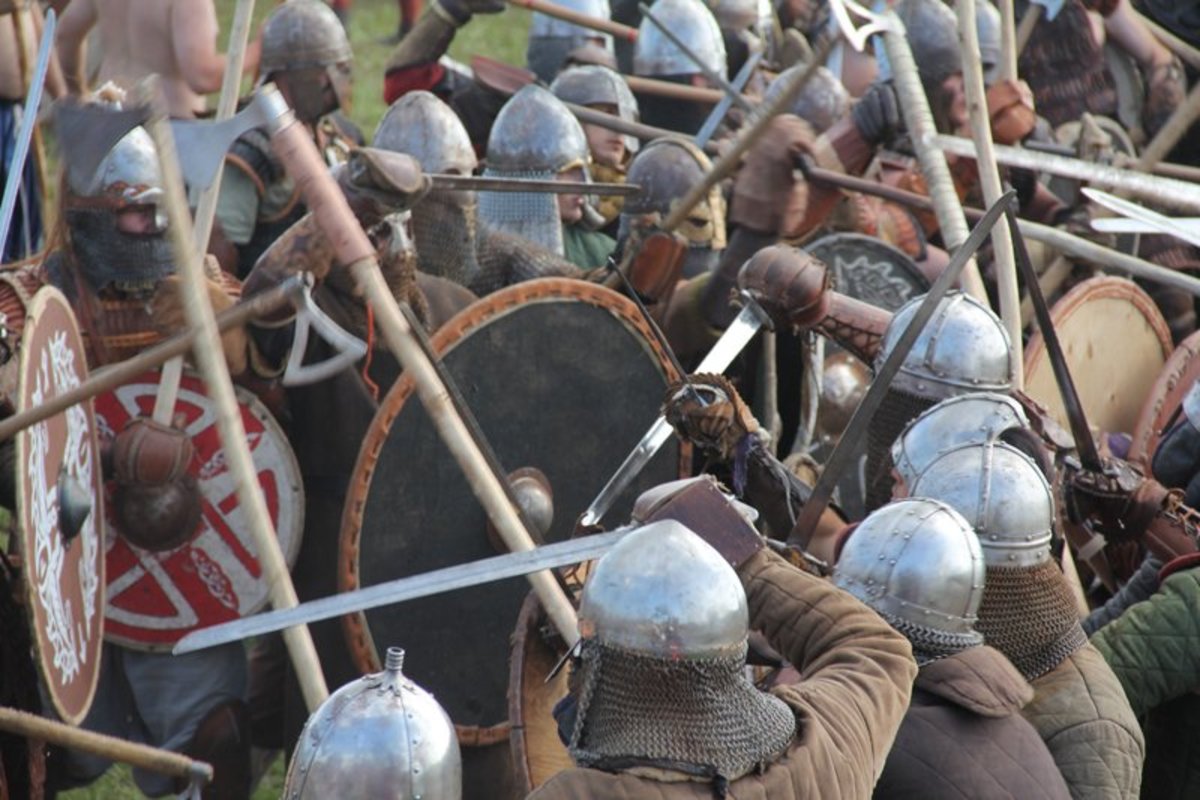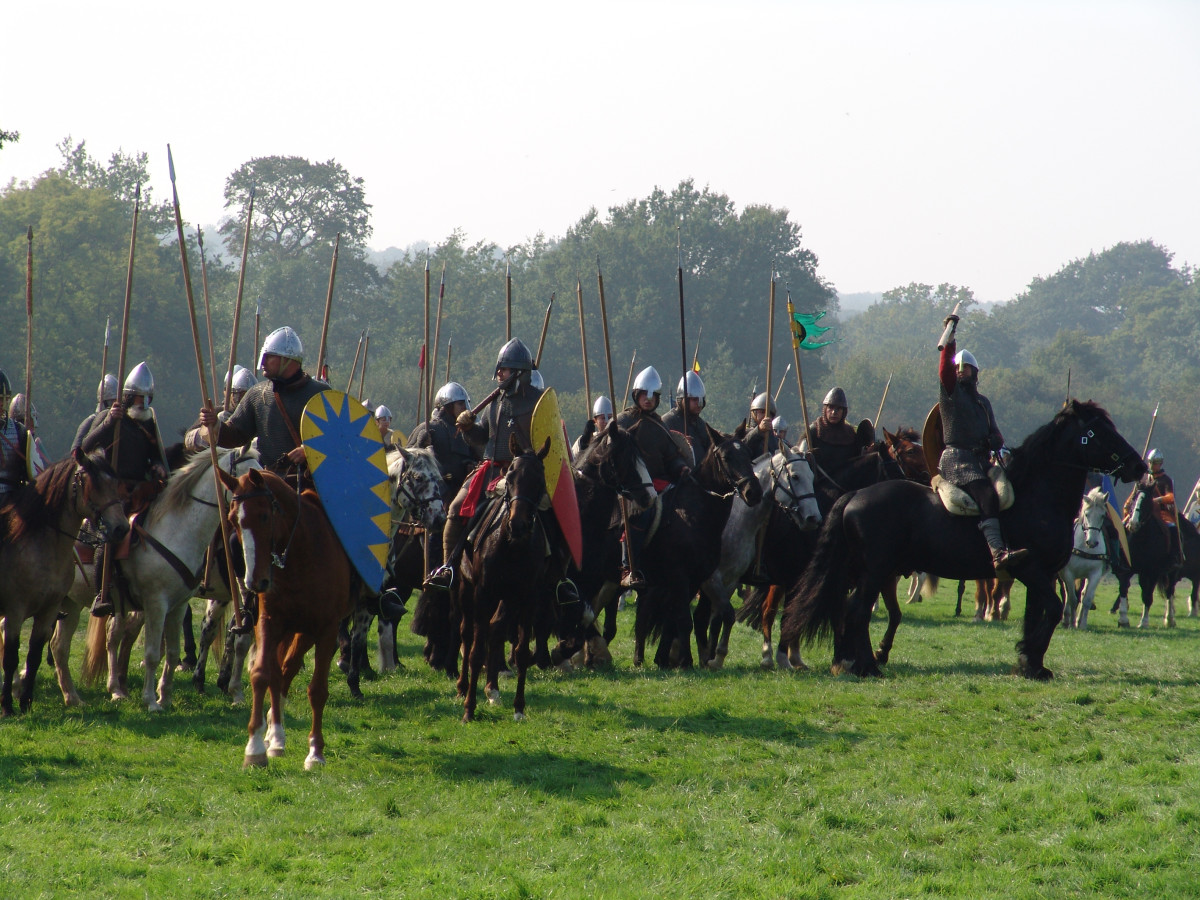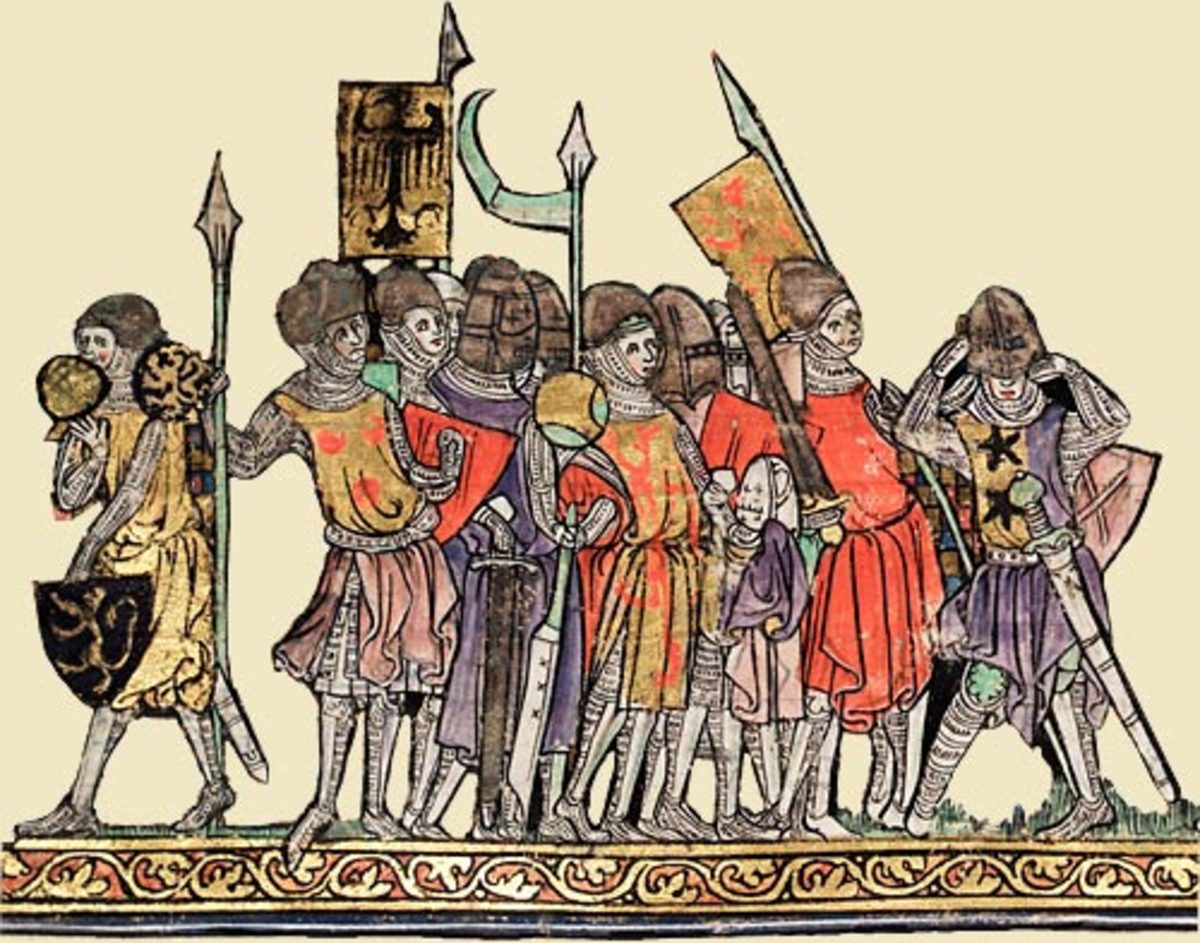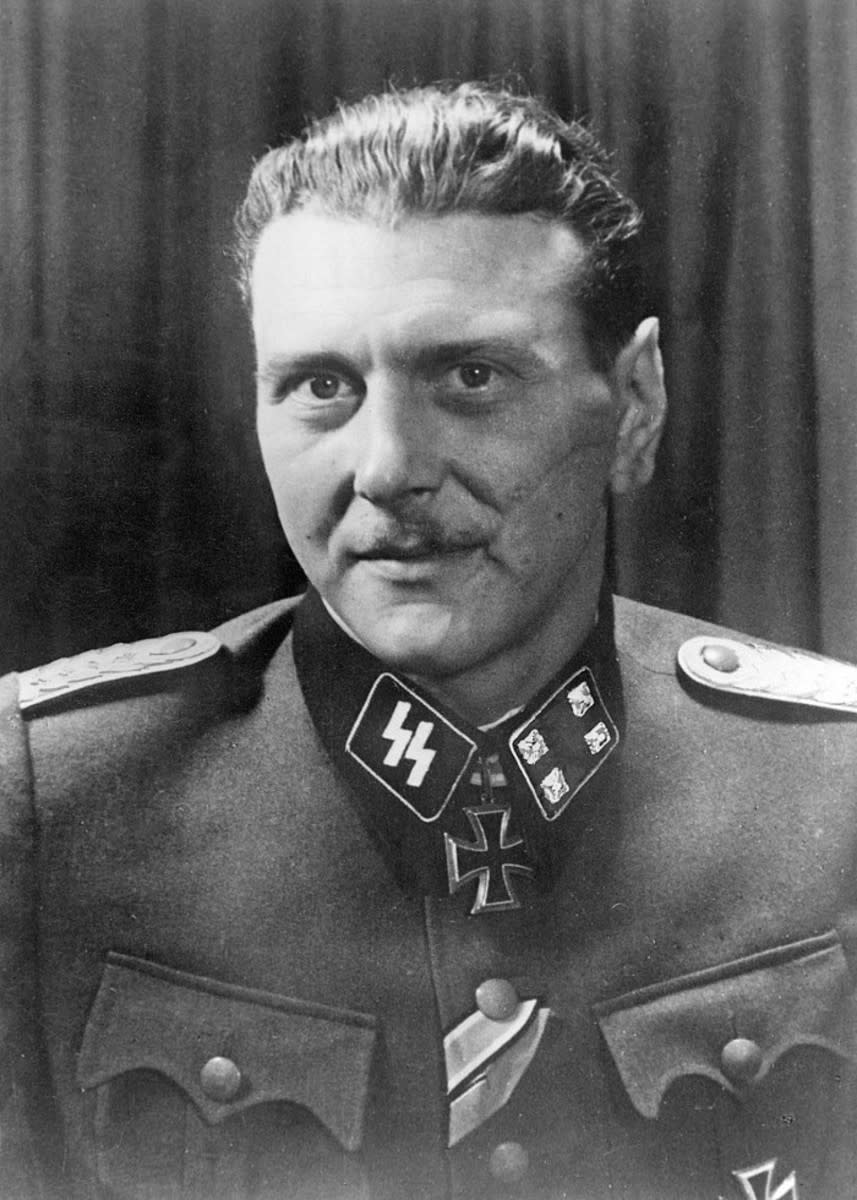Conquest - 15: Consolidation - What Awaited the Normans in Their Invasion of England?
'The long-hair'd star' - a bad omen? Many swore Harold's crowning would bring ill luck to England
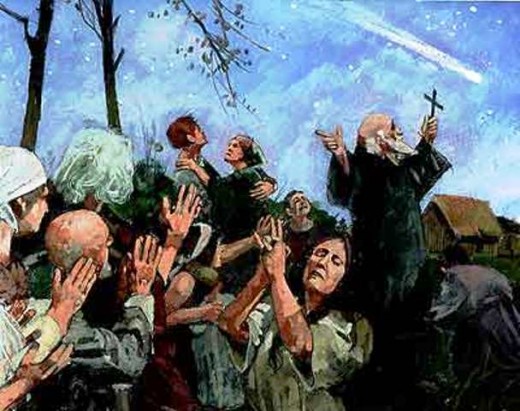
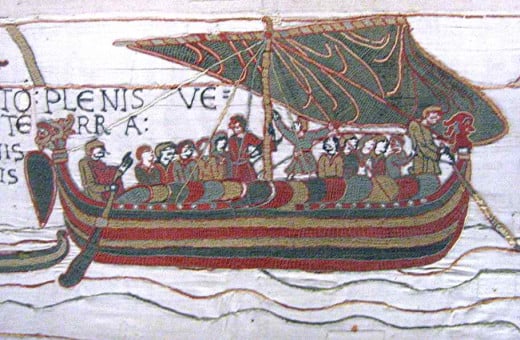
The Land after William's Coronation - who owned what, and where?
It is impossible to understand the effect of Norman settlement on English landholding without some insight on pre-conquest land tenure.
Many post-Conquest fiefs - such as the Sussex Rapes - were new divisions, compact blocks of land which cut across earlier land-holdings. Other fiefs were put together by granting to each Norman/French/Breton seigneur the lands of one or more named antecessors. Such grants conveyed both demesne (manors and berewicks), whether held by the antecessor or granted as laenland and rights over sokeland owing service to the demesne manors. Much argument over the relative frequency of these two methods of land distribution has gone into the comparison of like over like. General use of earlier grants did not include lands held by men linked to the previous owner by commendation alone, although such lands were often appropriated by Norman successors. Many disputes recorded in Domesday arose from the seizure of land by one Norman whose holder was commended to his antecessor of another Norman land-holder. It was hard for those used to Continental ways, in which land and personal homage were much more closely linked, to appreciate the distinction between personal lordship and lordship over land. Since the distinction has also been hard for modern historians to grasp, a short account may clarify:
Early English society was highly stratified. To the lowest distinction of bonded and free men was added the division into nobility (thegns) and non-nobility or commoners (ceorls) and each group was further delineated. The 'Laws of Knut (Canute)' show a threefold grading among thegns into earls (who superseded ealdormen), king's thegns and median thegns; among the Danes (in Northumbria and the Danelaw) the king's thegns were sub-divided into 'he who has soke' and 'he who has a closer tie to the king'. By 1066 the highest rank of earl was limited to four great dynasties, of Godwin (Wessex), Leofric (Mercia), Siward (the former Kingdom of York, Northumbria) and the House of Bamburgh (northern Northumbria - or Bernicia). Other families whose members had been earls or ealdormen had died out, dwindled in importance or were represented by those of lower standing. The king's thegns were a larger group. some included stallari (stallers) who were members of the royal household and were wealthy land-owners with holdings in several shires. The title of duc (duke) was introduced to England, not to supersede earl but to be senior to it. Earldoms were reduced in size and re-organised. Mercia, Northumbria and Wessex were replaced by counties, smaller administrative units. The titles of baron and comte (count) were also introduced to replace thegn and fiefdoms (landholdings) were held direct from the king.
Others were men of more local weight with small parcels of land but nevertheless dignified by being in the king's service. Their numbers are hard to guess. For Kent and the northern shires Domesday gives lists of the major land-holders and when the earls are omitted the figures for each county are: 23 in Kent, 9 in Nottinghamshire with Derbyshire, 7 in Yorkshire and 26 in Lincolnshire. There is some overlap between the three northern lists and some of the man named in the Kent list held land in other shires. It is likely the king's thegns of pre-Conquest England should be numbered in hundreds, not thousands, and the very richest of them are no more than a hundred.
Many more men and women than this are in Domesday as holding land on the eve of the Conquest, the usual estimate being between 4-5 thousand. It is likely many of these landed nobles were median thegns, whose standing was defined not only by birth and wealth but also by service. They have been in the service of an earl or ealdorman, not only the king or clergy. The ranks of median thegns were graded into those of the non-noble free men who acted in similar roles and some movement was seen in the ranks of thegns and ceorls. It happened now and then that a thrall or bondsman gained his freedom by a ceorl's gift, a ceorl became worthy of a thegn's rights by an earl's gift and a thegn - through a king's gift - might be deemed worthy of an earldom. Relationships between free men and median thegns one the one hand and the greater nobles (king's thegns, abbots, bishops and earls) on the other were governed partly by ties of personal oath (commendation) and partly by customary obligation (sake and soke). In the first case service was due from the man, regardless of whether or not he held land from his lord. In the second it was due from the land, irrespective of who held it, or to whom an individual was commended. The law codes distinguished between these two types of hlafodscip (lordship). The hlafod or lord held the personal homage of his men, the landrica or landhlafod was owed dues and services from the land, regardless of whether the holder was commended to him.
The rights of the landrica (at least in the south) derived from tenure of bocland, (bookland) - land held by royal charter or landboc - which freed the estate concerned from most royal demands, military service and the more important judicial rights excepted. The bookholder could thus divert all the exempted dues and services for his own ends. A landboc did not grant land alone but rights over the men who dwelt or worked on it whether thegn or free man. The service once performed for the king - at a royal vil - was now due to the hall of the book-holder and their lands were appurtenant to the central vil (or garth in the Danelaw and southern Northumbria) where the hall was sited, Such estates were held with 'sake and soke' (saca and soca). Jurisdiction was one of the mediatised dues, but 'sake and soke' also involved services and renders in cash and kind, described in Domesday as customary dues or consuetudines. Tributary holdings were sokeland, to distinguish them from the demesne land which belonged to the lord.
The landrica did not own the soke-land appurtenant to his manor, it belonged to its holders who stayed free (in the Domesday phrase) 'to give or sell it', though the service had still to be performed to the landrica. Nor did the landrica automatically hold the personal commendation of the holders of dependant soke-land. They might commend themselves to him, but they were free 'to go' , or more specifically 'to commend themselves' (se vertere) to whatever lord they wished! There are numerous variants of these formulae - but the import is the same. Sometimes where disputes are recorded, the meaning is spelt out.
Land at Alveston in Warwickshire had been held by Beorhtwin, but Archbishop Ealdred had 'sake and soke and 'toll and team and church scot and all other forfeitures except the four which the king has throughout the kingdom'. Beorhtwin's sons, who held the land in 1086 did not dispute Ealdred's rights, but said that 'they did not know from whom Beorhtwin held the land, whether from the Church (Worcester) or from Earl Leofric, whom he had served'. They themselves held land from Leofric and 'could commend themselves where they would with the land'. The sons were ready to render service to the Church (Worcester), but regarded the land as their own, though the fact that it was enrolled in the Church's breve suggests that they had not made good their claim. There was a case like this in Kent, where half a sulung of land at Stokenbury had been included in the manor of East Peckham, which 'belonged' to the monks of Christ Church, although it did not really belong there as such but for rent (scot) because it was free land (terra libera) and the scot had been paid by a pre-Conquest tenant Eadric of his own free will (spontanee). Eadric was not commended to the abbot, but was the king's man.
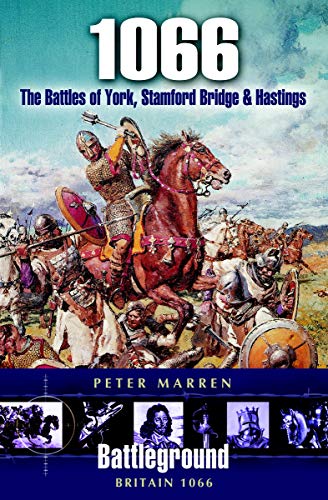
Beginning with the disastrous defeat of earls Eadwin and Morkere at Gate Fulford near York, continuing with Harold's victory over his errant brother Tostig and Harald Sigurdsson then Williams victory near Hastings, there's a surprise in store near the end of 1066. The names, the dates, the numbers and the locations... They're all here for you whether you're researching or just interested, to clarify a muddied page in history. Peter Madden's grasp of events is on the mark, read and learn.
Cavalry - a weapon hitherto unseen in England
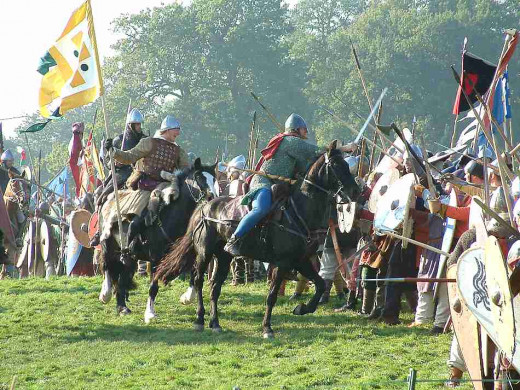
Britain after the Conquest
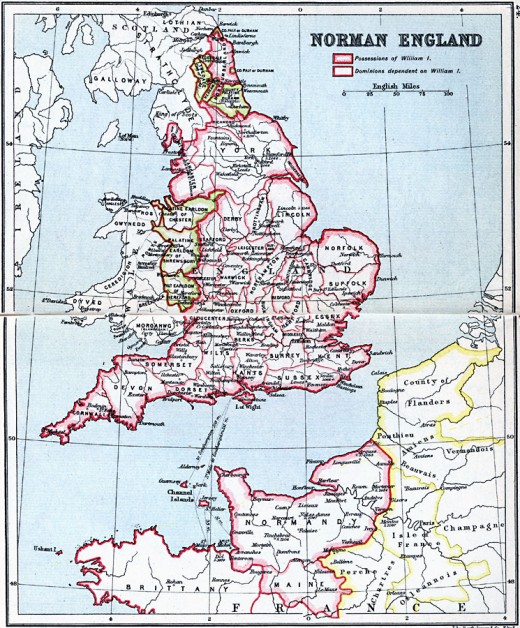
The Norman succession
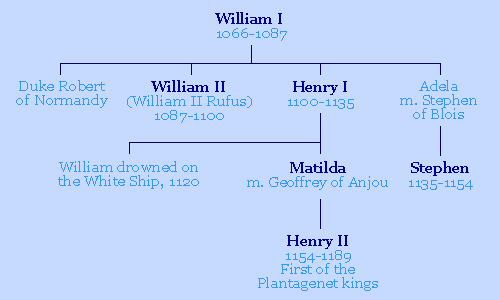
What next?
The story was the same In many an English burh. A Norman, Breton, Flemish or Frankish lord built a castle, had a district torn down to make way for the foundations and his keep blotted out the sun for those living nearby. This is the background for ...
15: An Englishman's Home
© 2011 Alan R Lancaster
